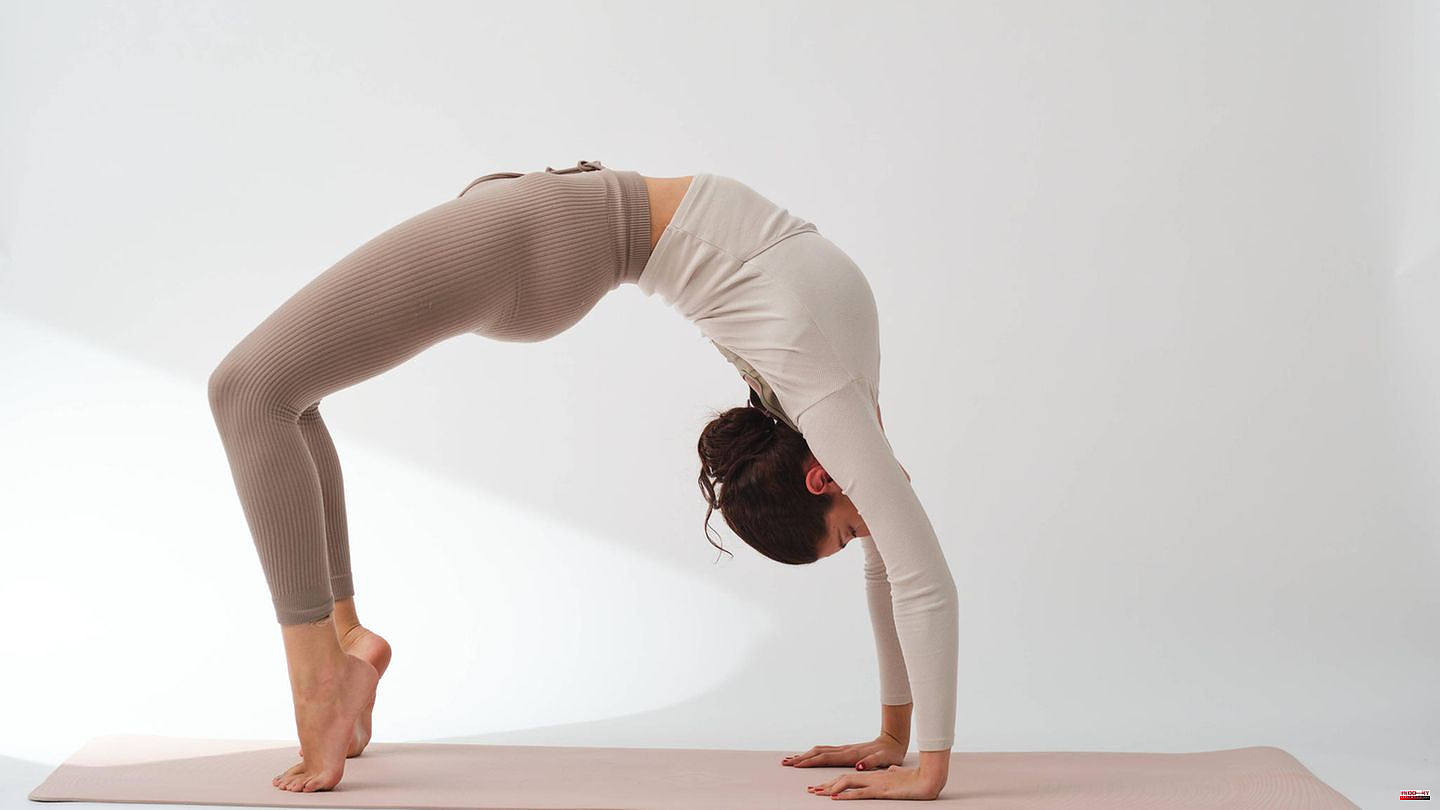The certificate that identifies me as a yoga teacher has been adorning the entrance area of my apartment for over a year. I haven't taught a single hour so far. There are several reasons for this. On the one hand, I completed the training just for myself, to deepen my own practice. On the other hand, after the end of the course, I felt anything but ready to teach. The training lasted just two weeks. Too short to delve deeply into all the important sub-areas that make up Indian teaching. Too short to adequately study the anatomy of the human body. Too short to be able to practice as a teacher yourself.
Nevertheless, there are numerous yoga schools, especially abroad, that offer these short courses. The fact that you can call yourself a yoga teacher after only a few weeks is because the title is not protected. Access to the profession is hardly regulated. It is neither a state-recognized training occupation, nor are there uniform regulations for the courses. The training institutions are private establishments that determine the duration, content and price themselves. If they are not affiliated with one of the professional associations or the Yoga Alliance, there is no overriding authority to verify the qualifications of these providers. It goes without saying that the quality of teaching varies greatly. In addition, the training courses have no official access restrictions. Apart from an interest in yoga, there are no prerequisites that the participants have to meet. In principle, anyone can become a yoga teacher in a very short time. "That's a big problem," says Birte Sattler, chairwoman of the professional association of yoga teachers in Germany (BDYoga). And it brings dangers with it.
The profession of yoga teacher - presented on Instagram either as a dream job or as a self-fulfilling part-time job - is becoming more and more popular. The training courses are therefore in greater demand. And represent a lucrative business model. "It's money-making. The main thing is that you pay, then everyone can go home with a certificate" criticizes the renowned yoga teacher and Inside Flow founder Young Ho Kim in an interview with the star. If you start looking for an apprenticeship, an opaque jungle of offers quickly opens up, which require the prospective customer to make a few decisions: Do I want to stay in Germany or go abroad? Which yoga style do I want to focus on? How much time and money do I want to invest?
On websites such as "Bookyogateachertraining.com", according to the market leader, "when it comes to discovering and booking unforgettable travel experiences", you can filter according to these criteria. In the "200-hour training" category alone, the most common variant with which most yoga teachers start their professional career, the site currently lists around 800 offers. The price range is just as wide: Some training courses cost 500 euros, others 5,000. In my own romantic imagination, I wanted to study in the most exotic, warm place possible in the middle of nature. And no longer than two weeks - I didn't have more vacation days left. I decided to do 200 hours in the Peruvian rainforest. In terms of price, I was in the middle of the spectrum.
Full of anticipation, I worked on the e-learning in the months before that, which as a compulsory part of the training was supposed to impart knowledge about the yoga philosophy, the structure of my own lessons and the human body. At the end, knowledge was tested with a multiple choice test, which could be repeated as often as desired. The same applied to the final on-site examination. Nobody could fail. Just as little as in the final teaching rehearsal. The yoga lesson, which you had to lead yourself, should not be sharply criticized - that's what the lecturers wanted - but rated with "loving feedback". Even if some teaching samples consisted of a 45-minute meditation unit and some participants had not practiced the preparatory online course, everyone was allowed to go home with a certificate. A certificate that distinguishes us as Vinyasa and Yin Yoga teachers for life. At this point it should be mentioned that my story is not an isolated case, but represents a widespread experience in the yoga scene.
"If you go out with the aim of actually teaching people yoga, I find that negligent," says Birte Sattler, BDYoga Chairwoman, about such courses. "It's dangerous and you're not doing yourself any favors - or the people who come to you." In the Western world, yoga has evolved into a physical practice that emphasizes the asanas. Sound knowledge of the human body seems all the more important. In training courses that only last a few weeks, however, this is not enough. "If I don't have enough anatomical knowledge, I can endanger people," emphasizes the expert. Especially - but not only - yoga students with physical disabilities who cannot perform some exercises. "You have to know how to deal with it so that nobody is overwhelmed or even injured." For the new yoga teacher there is also the risk of overestimating their own abilities and overtaxing themselves.
For the BDYoga Chair, time is the main issue. "A longer training period significantly improves the quality of the teaching," she says. Because yoga teachers have to go through a maturing process "to grow into the role". According to Birte Sattler, in addition to technical knowledge, a yoga teacher is characterized by skills such as authenticity, honesty and transparency as well as empathy. And flexibility: "Being able to adapt the practice to the needs of the students." Skills that cannot be acquired in a few weeks. The expert also advocates stricter exams: "If there are weak points, you have to work on them and repeat the exam if necessary, also to protect the prospective teacher." For Inside Yoga founder Young Ho Kim, this is a matter of course: "We have certain standards in our training – you have to meet them, otherwise you're not allowed to teach Inside Yoga."
Anyone who wants to become a member of BDYoga must be "comprehensively qualified", according to the website. At least two years of training - either at BDYoga itself or at an institute with similar standards - is mandatory. The BDYoga courses last two or four years. In addition to a written and oral final exam, the training concept includes several teaching samples. "That's how you see the development process. That's how you grow into the role of teacher and learn, for example, to develop different lesson plans." Members must also commit to complying with professional ethics guidelines. Regular further training, on the other hand, is voluntary.
In addition to the BDYoga, the professional association of Yoga Vidya teachers also sets certain quality standards in this country. The association prescribes ethical and quality guidelines for its members, including the obligation to undertake professional training. The courses at Yoga Vidya last two years or – as an intensive course – four weeks. At the end there are exams. A practical and written test for multi-year training. The prerequisite for admission is, among other things, "written proof of the pedagogical homework," the association said when asked by stern. In the short version, there are several teaching samples, a written and an oral exam.
Both clubs have around 5,000 members, making them the largest professional associations in Germany. In addition, the health insurance companies are also committed to a higher standard in yoga teaching. Anyone who wants to be certified as a yoga teacher by the health insurance company must prove that certain content has been covered in the yoga teacher training: "This also includes the qualifications of the lecturers: who has taught in which area and does he or she have the appropriate competence?", explains Birte Sattler. After completing a yoga teacher training course, you don't have to join one of the clubs or obtain certification from your health insurance company. "But if I want my courses to be well attended, that can be an advantage."
Those who travel abroad for training are likely (like me) to come into contact with the Yoga Alliance. The world's largest yoga association, based in the USA, has set itself the goal of establishing criteria for "high-quality [...] yoga classes around the world". According to their own information, around 7,000 training institutes around the world are registered with the Yoga Alliance. To become a Registered Yoga Teacher (RYS) one must pay an annual fee upon completion of the training, commit to regular continuing education, and adhere to ethical guidelines.
Three years ago, the association introduced "raised standards" for the 200-hour training. Among other things, the content has been revised towards "a common core curriculum", reports the association on the website. A time frame for the 200 hours is not specified. Although teaching samples are mandatory, there do not seem to be any guidelines for a final examination. At least there is no information on the website. A request from the star remained unanswered.
Anyone who is toying with the idea of starting a yoga teacher training course should take the time to analyze the oversupply of courses in detail. According to Birte Sattler, the following questions can help to identify reputable providers: Can the curriculum and the content be viewed? Are the costs transparent? Are the two points related? Who teaches? What qualifications do the lecturers have? In addition, one should deal with one's own intentions: What do I want to learn? Where do I want to go with the yoga? If you only do the training for yourself, there is nothing wrong with a short two-week course, says Birte Sattler. "There are many who initially only do the training for themselves. Later, however, the desire to teach develops," says the BDYoga chairwoman. At this point, most people realize "that what you have learned in the two to four weeks is not enough".
Therefore, the expert would always recommend a longer training of one to two years. "Then you have a good foundation on which to develop and on which to build." The two weeks were an enriching experience for me. But I never felt like a teacher – because I also noticed that I didn't have enough time to grow into the role. It is clear to me: If I want to use my almost dusty certificate for my own course in the future, I would (happily!) slip back into the role of the student. And then for longer.
Sources: Professional Association of Yoga Teachers in Germany (I), Professional Association of Yoga Teachers in Germany (II), Professional Association of Yoga Vidya Teachers (I), Professional Association of Yoga Vidya Teachers (II), Yoga Alliance (I), Yoga Alliance (II), Yoga Alliance (III), Yoga Alliance (IV)












